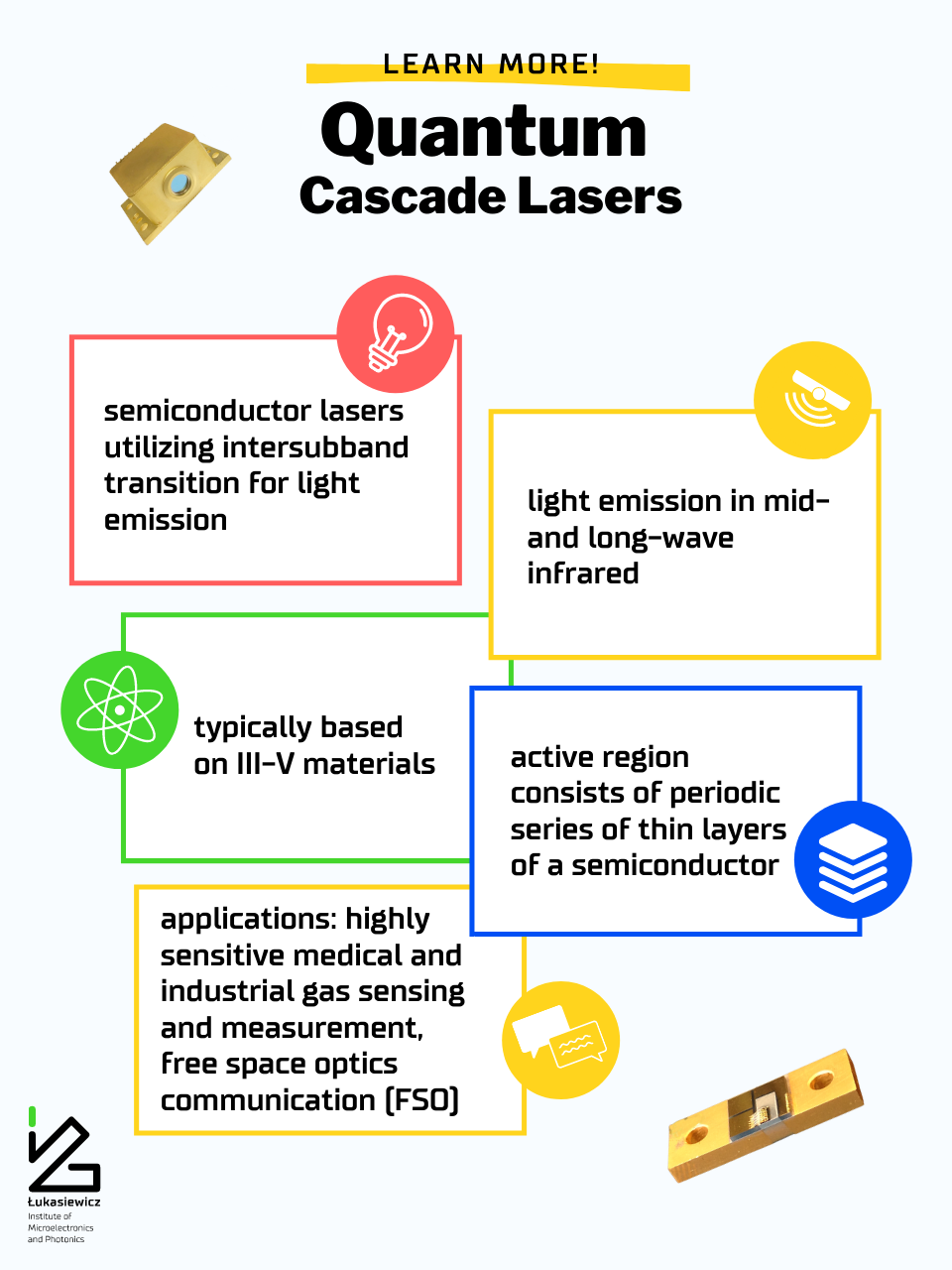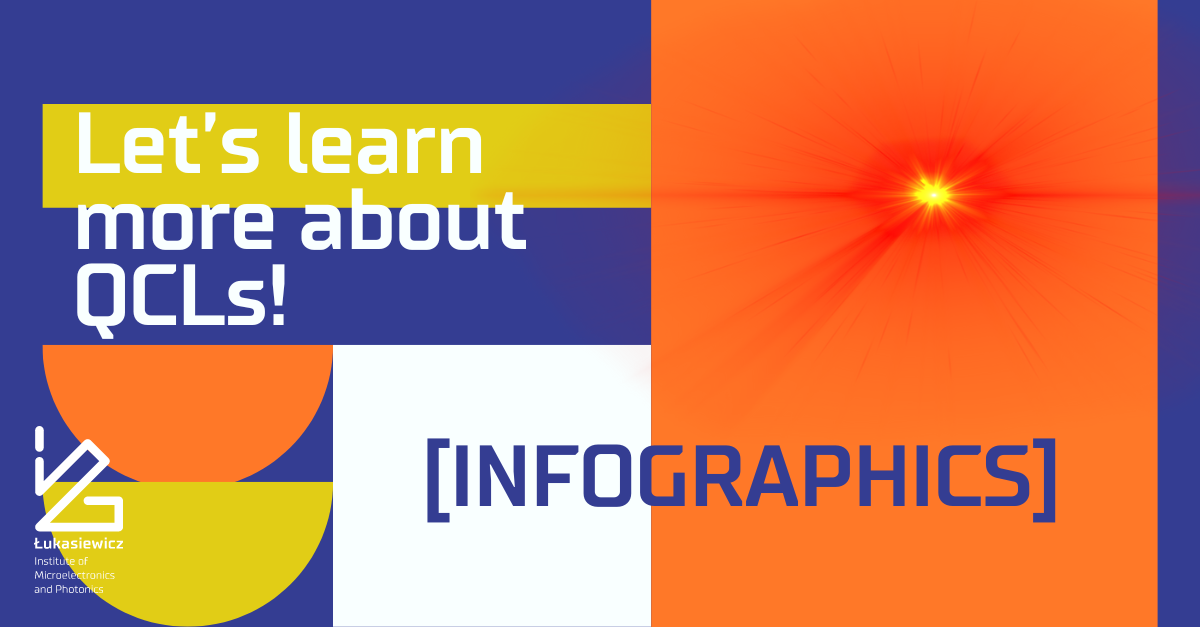Our researchers have prepared a short note on Quantum Cascade Lasers (QCLs) to show you why they’re so interesting and how they can be used.
1) semiconductor lasers are typically based on interband transitions – which are electronic transitions between two different bands called valence band and conduction band where electrons and holes recombine and emit photons. In the QCLs, the light emission process is based on intersubband transitions – transitions between quantized electronic states (subbands) inside the conduction band which makes these devices unipolar – they utilize only electrons for light emission.
2) Mid- and long-wave infrared are electromagnetic waves of 3-5 µm and 8-14 µm length (typical for QCLs) whereas the visible light spectrum consists of 380-750 nm wavelength. For example, the most familiar IR device used in our everyday life – a TV remote equipped with IR light emitting diode – emits light that is ~940 nanometers in wavelength which falls within the range of near-infrared light.
3) III-V materials are chemical compounds found in QCLs containing elements from groups III and V in the periodic table of chemical elements. These materials are utilized to create structured semiconductor materials with special properties. Such materials are the baseline of many electronic devices and also semiconductor lasers including QCLs. The III-V materials are for example gallium arsenide, gallium antimonide, and indium phosphide.
4) The active region – a spot where photon emission takes place, is the heart of a semiconductor laser. In QCL it consists of a stack of sequentially placed few-nanometers thick layers of semiconductor materials. This is the most important part of the whole laser structure and it requires an ultraprecise growth method e.g. MBE (Molecular Beam Epitaxy).
5) Applications of QCLs are mainly focused on spectroscopy – studies of the absorption and emission of light and other radiation by matter, especially gasses. Gas sensing systems including QCLs are highly sensitive and can find use in the medical, industrial, and environmental protection fields. What’s more, the mid-IR spectrum region contains an “atmospheric window” where electromagnetic waves travel through atmospheric gases with very little loss. This makes QCLs great sources for Free Space Optics (FSO) communication.



